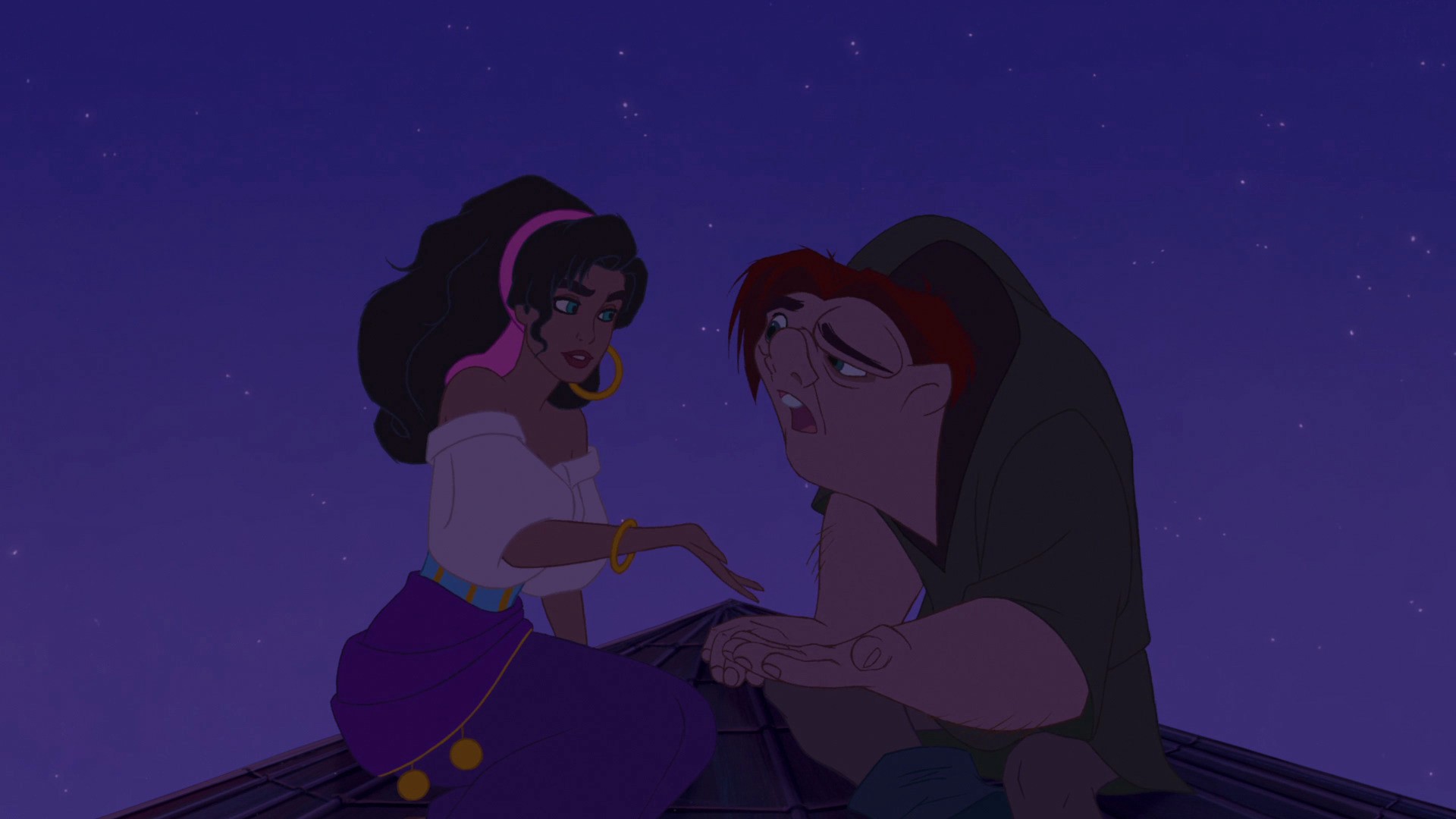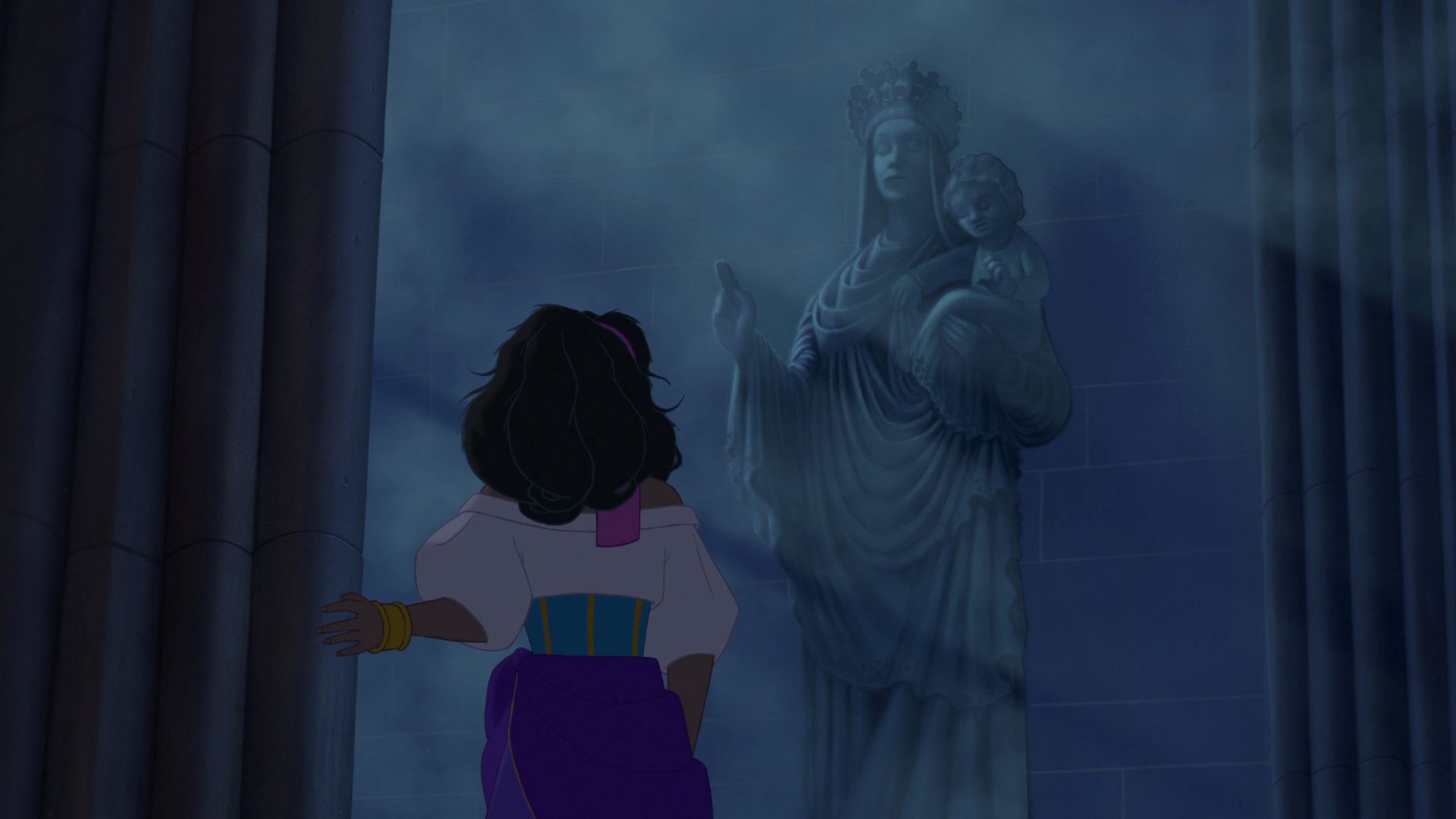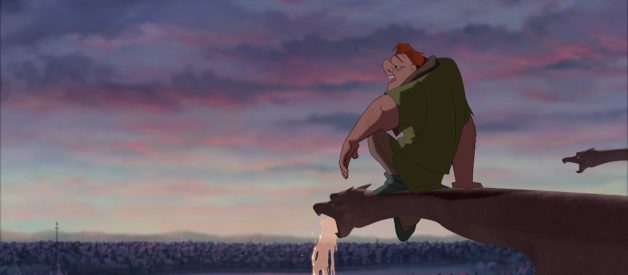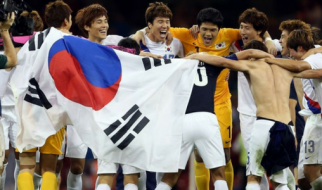
Almost a decade ago, the ?Revival? era of Disney animation commenced. Starting with The Princess and the Frog, the studio began producing critically acclaimed films once more, after a long period of poorly received movies with less than stellar animation.
Much like the 90s? ?Renaissance? era, the Revival has introduced interesting new concepts and allowed the studio to experiment with more challenging material in response to a more socially aware audience.
But we can?t forget that Disney was already testing the limits of what films for kids could show in the 90s. However, many of these attempts were poorly received despite their groundbreaking approach. One of such films was The Hunchback of Notre Dame.
Loosely based on the famous novel by Victor Hugo, this adaptation took a more kid-friendly approach by changing many elements, and still coming out with a story that stands out on its own by dealing with dark subjects that were rarely seen in animation aimed at children.
To this day, it remains overshadowed by more conventional ?although undeniably great- films like Beauty and the Beast, Aladdin and The Lion King. It?s perhaps the most underappreciated film of the ?Renaissance? era, alongside Pocahontas ?which, unfortunately, also carries the burden of a faulty portrayal of Native American culture and history.
In this essay, I would like to shed a light on how this film in particular planted the seeds for the current wave of transcendent kid-friendly storytelling. Hopefully, it will help others rediscover and appreciate this classic a little bit more.
Why ?The Hunchback of Notre Dame? is great
The characters
Hunchback had a set of very unconventional characters for a Disney film: Quasimodo, the deformed protagonist; Esmeralda, the spirited gypsy; Phoebus, the rebellious soldier; and Frollo, the lascivious and oppressing judge. From the get-go, the film lets us know through no uncertain terms that this is not your typical Disney movie.
But not only does the film stand out for choosing to go forward with a cast of characters that defy the norms of appearance and behavior. The characters are also inherently imperfect in a way that many classic animated characters rarely are.
Quasimodo, despite being the tragic figure we are supposed to root for, is also a reluctant hero. He can be stubborn, rude, and even defeatist, as seen in his interactions with Phoebus and his initial unwillingness to help Esmeralda once she chooses the soldier.
Likewise, Esmeralda and Phoebus have shades of gray to them. Although they?re the more active characters throughout the movie, keenly rebelling against injustice, they can also get involved in questionable deeds.
Esmeralda, for example, has problems trusting in people outside the gypsies, which makes her initial interactions with Phoebus charged with suspicion despite his willingness to aid her. She is also stubborn to a fault, and something could be said about her stillness during Frollo?s attack on the people of Paris.
In Phoebus? case, it takes him quite a while to protest Frollo?s racial cleansing of Paris. Although he helps Esmeralda in the shadows, he has no problem seeing the Judge almost drown a group of innocent gypsies in order to find her. He isn?t a squeaky-clean hero, as seen in his involvement in the burning of the city.

Frollo is an interesting villain, as he is both god-fearing and intelligent, yet also cruel and manipulative. And it should be remembered that long before Mother Gothel insulted and humiliated Rapunzel into submission while raising her, Frollo had done the same to Quasimodo after almost taking his life while he was merely an infant.
Frollo is also a very ?human? villain. Unlike Maleficent, Jafar, Ursula, etc., he possesses no magical abilities. Instead, he is terrifying because he could be real, and he holds a position of power given to him by the law ?considering that he is a Judge in this version of the tale.
As we?ve seen, the film presents a landscape of flawed characters that could be found anywhere and at any time. And it doesn?t shy away from showing their weaknesses, instead stripping them of any possibility of idealization. They are who they are, and they act according to what?s best for them, until they can no longer stay in the sidelines.
Nonetheless, the introduction of these characters isn?t perfect. A good example of this is Esmeralda. As a non-white character, she still suffers from the sexualized exoticism that pervaded the design of persons of color during the 90s (think of Jasmine, Pocahontas, and The Girl in The Jungle Book long before them).
However, she is still a step forward in the right direction, as she is assertive, strong, fearless and compassionate. Seeing her stand up to Frollo and claim justice as Quasimodo is publicly humiliated after his coronation as the King of Fools, is a powerful moment that can inspire children ?and adults- to use their voice in favor of those who are being oppressed. It?s a compelling scene and message that is still incredibly relevant in today?s world.
While characters like Moana or Elsa deserve the praise they get, the seeds had already been planted in films like The Hunchback of Notre Dame, which also deals with profound ethical subjects that are mostly absent in today?s narratives despite moving forward in other aspects.

The story and themes
Perhaps due to the prevalence of watered down sequels and some simplistic narratives throughout the Experimental period of Disney animation, it?s easy to forget that the Disney Renaissance dealt with many complex stories long before the Revival era. From ostracism in Beauty and the Beast, to familial betrayal in The Lion King, racism and tolerance in Pocahontas, misogyny in Mulan, etc.; ?the Renaissance era was exploring interesting stories and themes that didn?t question the intelligence of children, nor their ability to cope with real-life darkness.
Although Disney has always refrained from utter gore, extreme violence, or openly sexual scenes, the Renaissance era found ways of addressing darker matters while also diversifying characters and adapting to their increasingly sharp audience. In many ways, the films of this period mastered the balance between fantastical innocence and the complexity of real life.
Through The Hunchback of Notre Dame, Disney explored themes like the malleability of the masses, abuse of authority, prejudice, religion, obsession, sexuality, and the importance of civic action to stop injustice. Heavy themes for a children?s film!
These aspects are present in the original material. Nevertheless, due to the gloomy nature of Victor Hugo?s novel, changes needed to be made in order to adapt it for children. The ending, the relationship between Esmeralda and Phoebus, the role of the Hunchback himself, and the nature of Frollo and other characters, were completely altered from the source. And, surprisingly, the filmmakers were still able to deliver a story that is just as meaningful and gut-wrenching.
Hunchback follows the journey of different characters who meet in the midst of a tense political time, as Frollo prepares to cleanse the city of Paris from the pagan influence of the gypsies. At the same time, Phoebus is reintroduced to a city he can?t recognize anymore, Esmeralda is trying to survive in the streets, and Quasimodo desperately wants to participate in a society from which he has remained hidden throughout all of his life due to his appearance.
All the characters, with their wants and needs, converge in the Festival of Fools, during which the tensions hit a peak. Ironically, although the Festival represents a time of peace and confluence between the Parisians and the outsiders ?the gypsies-, the unexpected confrontation between Esmeralda and Frollo ends up setting in motion a chaotic chain of events that will condemn the city and all of its inhabitants.

Frollo?s desire to eliminate the gypsies will combine dangerously with an unhealthy obsession with Esmeralda, whom he wants to possess at all costs. It?s one of the most overtly sexual storylines ever presented in a Disney film, and neither the animation nor the music shy away from it, nor they try to pass it as a simple and harmless infatuation.
Another important theme in the film is that of the character?s deformity and how it defines his interactions with others. We get to see how Quasimodo himself feels about it, how Frollo uses it against him, and how society reacts to it as well. And it?s a refreshingly honest portrayal of it.
Not only do the characters openly show their initial shock and dismay at his appearance, also none of them warm up instantly to Quasimodo, and all must go through a learning process where they finally manage to see beyond it. Some faster than others, of course.
As a hero, Quasimodo doesn?t ?get the girl? in a typical Disney way ?a fact that has been heavily criticized, although the film takes the time to show longer interactions between Esmeralda and Phoebus, which occur before her friendship with Quasimodo develops, planting the seed for their romance very early on-, and, in fact, he doesn?t receive any instant praise or reward for saving Esmeralda after Frollo attempts to murder her.
One of the most laudable moments of the film comes right at the end. After Frollo is gone, Esmeralda and Phoebus leave Notre Dame to the resounding cheers of the crowd. Then, Esmeralda turns and invites Quasimodo out of the building in order to face the same multitude that once mistreated him, spurred by Frollo?s guards. We hear gasps, and for a moment nobody moves. It?s a child who comes forward and approaches him. She looks momentarily caught off guard by his appearance, but then she reaches forward and touches his face, smiling and treating him with love. It?s the movie?s way of asking the children in the audience to be the representatives of compassion in a world where adults are malleable due to their own fears and prejudice.
Like Esmeralda defying Frollo, this last scene is a pivotal moment that defines the heart of the film, and why it?s important for children to be exposed to this type of material, even if it?s a simplified version of a much darker story. In a world where many movies for children are full of color, nonsense and provide easily digestible lessons, The Hunchback of Notre Dame dares to not take their astuteness for granted, challenging them with complex, interesting ideas.
Physical deformity is not necessarily a reflection of a person?s soul. Having a different cultural background doesn?t mean someone is inherently dangerous or evil. People can and should question authority when it?s misused. A person with power can be corrupt and won?t always act according to what?s best for their people.
Sometimes the real monsters can look like you and me.

The animation and music
While marketing needs seem to define the current animation style of many Disney films, the unconventional narrative of Hunchback inherently defied the canons of animation that would be expected today.
With a deformed character at the core of the story, animators had to find a way to present a protagonist with odd features that could still be likeable enough to elicit the sympathy of the audience. Similarly, many stylistic choices had to be based around what the story -and not necessarily the monetary interests behind it- required.

A great example of it is Notre Dame itself. Notre Dame is a ?living? character in the film, and it embodies the heart of Paris. It manifests itself through the Gargoyles, the statues of the saints, the large stained glass, the atmosphere, etc. In order to illustrate this, the animators focus on its structure and its lurking presence with a sense of awe.
The use of color and light is extremely important. The city responds to the events of the film tangibly, changing in order to reflect either joy, pain or anger, according to what is happening in the story. And although this aspect isn?t unique to Hunchback ?for example: it also occurs in Pocahontas and The Lion King-, it?s difficult to find more recent examples of it.
The animation of Hunchback took risks. It presented a protagonist with irregular features, a confident and colored heroine, a rough and non-princely hero, a plain-looking villain, and a city that is sometimes ugly and ordinary, and at other times imposing and magical. And all of them are unequivocally full of life.
While current animation can sometimes look too doll-like, the characters of Hunchback distill a disarming realism. Their emotions and inner thoughts are exposed, and at times when the dialogue disappears entirely, the animation truly shines, as looks, actions and expressions speak louder than words.
The music supports this change in direction as well. Although we are still dealing with an animated musical, the film dives into a more operatic style while also incorporating unusual sounds for a children?s flick, based on Gregorian chants.
Like Beauty and the Beast, the film has a more traditional structure which incorporates the commentary of a chorus led by Clopin, who is in charge of telling the story. But for all the grand moments that manifest during his interventions, there are also intimate songs that delve deep into the character?s psyche. This is particularly important in a film led by a protagonist with such an alienating appearance.
Like the narrative, the lyrics don?t shy away from darker topics. Mental abuse and isolation (Out There), the socioeconomic neglect of the poor (God Help the Outcasts), self-denigration (Heaven?s Light) and sexual and religious obsession (Hellfire), are some of the many themes weaved-in throughout the musical.
The score also combines typically religious tunes with more popular music. A mixture that reflects in itself the multicultural and diverse nature of Paris, and the relationship between the citizens and Notre Dame.
In this sense, the music mirrors the various dichotomies of the narrative perfectly: grandiosity versus intimacy, joy versus solemnity, paganism versus organized religion, innocence versus corruption, light versus darkness? finding a place for all of these contrasting elements in the same way the city takes all of the characters under its wing.

Closing Thoughts
The Hunchback of Notre Dame is a film with a unique soul that distinguishes it from anything we?ve ever seen before ?and since. Many of the elements that we consider progressive in some of the movies of the Revival era, were either hinted at, or even surpassed by this movie.
Although it gained the critical appraisal of personalities like Roger Ebert, the wider audience didn?t seem ready to embrace it. Looking back, I do wonder what would have happened if Hunchback had been released in this day and age, when its message would be profoundly resonant.
Perhaps this is the right time to revisit it and recognize the film for what it was: a bold story that challenged children to face the darkness in the world with bravery and kindness. A story that invites us all to raise our voice in the face of cruelty and bias.


